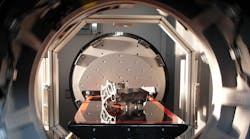No plant manager or operator is immune to the nagging influence of customers, stakeholders and technology developers goading them to increase performance levels, improve productivity, enhance reliability, etc. “Smart” manufacturing sounds terrific in seminars and sales pitches, but how can we know that “factory of the future” systems will perform as predicted in the here and now? Industry 4.0 may be emerging, but how can the operator be sure that existing technologies will continue to perform once the networks are in place, the machines are communicating, and the automated decision-making functions are in operation?
The National Institute of Standards and Technology, a U.S. Dept. of Commerce agency, recently published a series of “science-based” guidelines to wireless communications, to help manufacturers select an appropriate system for their specific industrial setting, customize the installation, deploy it successfully, and maintain the network so its performance remains reliable.
By eliminating physical connections such as wires and cables from a facility’s communication network, wireless technology offers manufacturers and other industrial operations a way to make entire organizations more efficient and productive, at lower operating cost. But, potential operators have concerns about wireless systems’ reliability, integrity, and security, concerns which may be slowing the embrace of industrial wireless technologies. The frustration (or worse) of wireless communication being disrupted by the infrastructure and process-related interference in manufacturing settings is a real concern.
NIST is working with private-sector collaborators and standards organizations to address these issues, to make industrial wireless communication more compatible with manufacturing operations. Last year, NIST and the Institute of Electrical and Electronics Engineers (IEEE) organized a technical working group to develop “a succinct yet comprehensive, easy-to-use reference guide and best practices manual for anyone, from control engineers to factory managers, to integrate a robust, safe, reliable and secure wireless system into their unique industrial landscape,” according to Rick Candell, an electronics engineer at NIST’s Engineering Laboratory.
Candell said the new guidelines will direct users clearly through each step to achieving an optimal wireless communications program for specific operations. Following the step-by-step references are several best-practice case studies to show what has worked to improve and optimize wireless in different factory situations.
“For example, one scenario looks at a common but often overlooked problem when using wireless communications (e.g., Bluetooth devices) … that personnel are using,” Candell said. “The guide tells how to identify the sources of such interference, measure how they impact factory operations, and then use the data to choose the most appropriate solution from those described in the text.”
Another case study described by the guide shows how properly deployed wireless could prevent a hazardous work environment. “Wireless gas sensors can monitor the accumulation of poisonous or combustible gases in a work setting but only if all of the signal transmission and propagation challenges in that area are considered,” he explained.
Candell said still to come will be NIST guidelines for more advanced communications, such as wireless technologies for controlling mobile and collaborative robotics.









